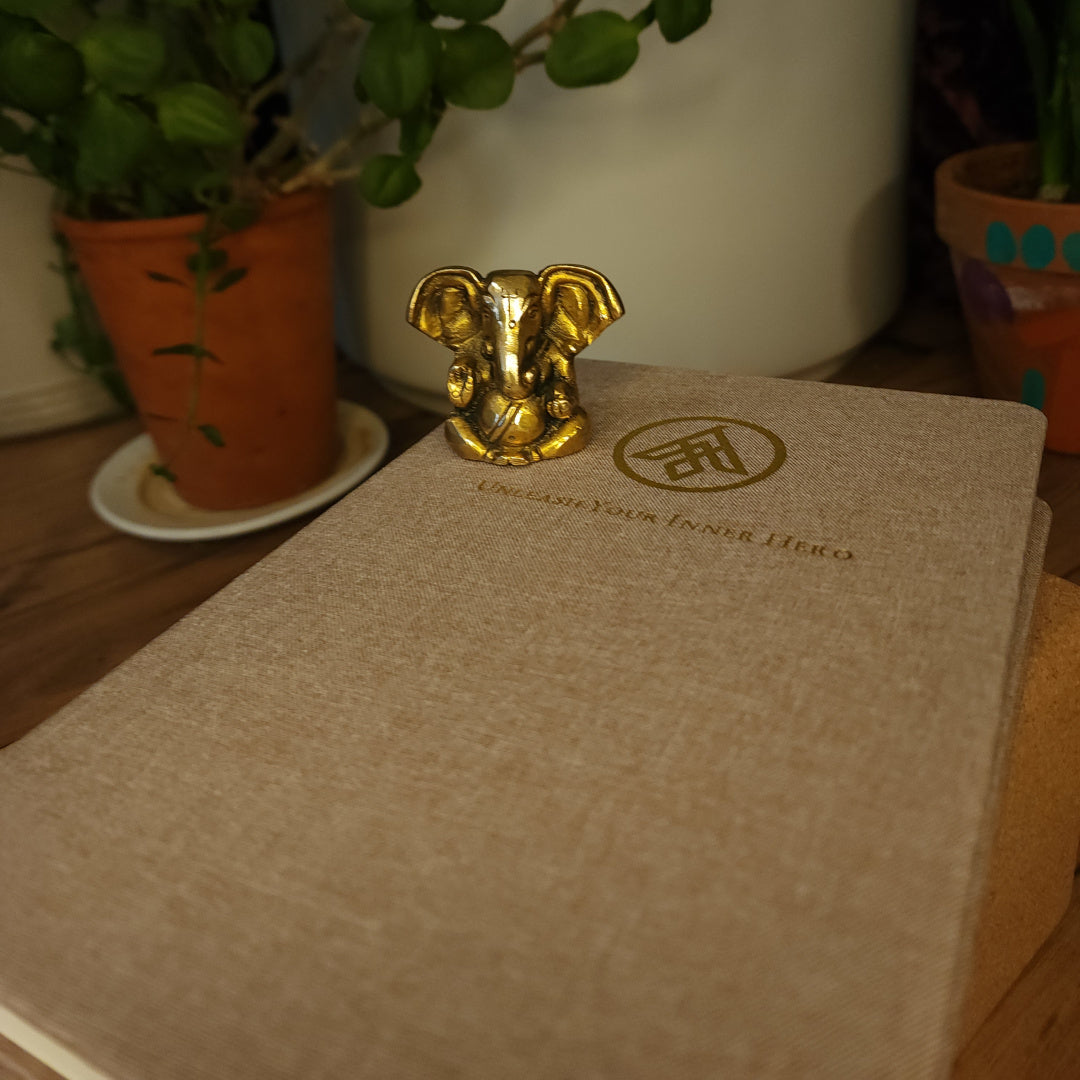Kumbhaka (Breath Retention)
Jack UtermoehlShare
Kumbhaka refers to the intentional pause or retention of the breath, typically practiced between an inhalation and exhalation.
In yogic pranayama, kumbhaka is used to extend the stillness between breaths, cultivating focus, control, and inner awareness.
This breath retention is not just physical, it is a gateway to deeper states of concentration, energy control, and meditative stillness.
Etymology and Meaning
Sanskrit Spelling: कुम्भक
Root Word: "Kumbha" (pot or vessel)
Translation Variations: Retention of breath, breath hold, inner pause
Pronunciation: Kumbhaka [KOOM-bhuh-kuh]
The word "kumbha" refers to a pot or container, symbolizing the body holding prana (life force) as a vessel. Kumbhaka, then, is the stillness or suspension of prana in that vessel, cultivating pranic stability and energetic balance.
Historical Context
Kumbhaka has been practiced for thousands of years within the traditions of Hatha Yoga and Raja Yoga. It appears in foundational texts such as the Hatha Yoga Pradipika and the Yoga Sutras of Patanjali, where it is seen as essential for mastering pranayama and preparing the mind for meditation.
Hatha Yoga: Describes kumbhaka as the still point where energy is suspended and transmuted
Yoga Sutras: References the pause between breaths as a method for calming the mind and transcending fluctuation
Types of Kumbhaka
- Antara Kumbhaka: Retention after inhalation
- Bahya Kumbhaka: Retention after exhalation
- Kevala Kumbhaka: Spontaneous breath retention that arises naturally in deep states of meditation
See my article on the Types of Pranayama for more information.
Practical Application
In Breathwork
- Practice gentle retention after each inhale or exhale to train the nervous system
- Avoid straining, retention should feel steady and calming, not forceful
In Meditation
- Use kumbhaka to create stillness and heighten inner focus
- Allow pauses to lengthen naturally as concentration deepens
Symbolism in Yoga Philosophy
Kumbhaka represents the still point at the center of movement. Just as silence gives shape to music, the pause between breaths reveals the spacious awareness behind mental activity.
In subtle body practices, kumbhaka stabilizes prana in the central channel (sushumna nadi), supporting spiritual awakening.
Quotes and Wisdom
"In that pause where the breath is held, time loses its grip and awareness blooms." - Yogic teaching
"Just as a pot holds water, the body holds prana through kumbhaka, sustaining the inner fire." - Hatha Yoga Pradipika
Modern Relevance
In today’s stress-filled environments, kumbhaka offers a practical way to reset the nervous system and train the mind toward consciousness.
It fosters tolerance for stillness, heightens emotional regulation, and opens the door to meditative absorption.
Every practice of breath retention can shift awareness into a more spacious and grounded state.
Related Concepts
Pranayama: The broader system of breath control in which kumbhaka is a key technique
Prana: The life force being refined, directed, and suspended through kumbhaka
Dhyana: Meditative absorption enhanced by the inner quietude of kumbhaka
How to Practice Kumbhaka
Mindset: Approach with patience and a sense of curiosity
Actions: Begin with simple, short holds (2–4 seconds), building gently
Reflection: Notice how breath retention impacts your state of mind and energy
Suggested Reading
- The Hatha Yoga Pradipika (Swami Muktibodhananda translation)
- The Science of Breath by Swami Rama
- The Yoga Sutras of Patanjali
Conclusion
Kumbhaka is the sacred pause, the stillness that reveals what lies beyond breath, thought, and time.
It teaches the body to hold energy with grace, and the mind to rest in presence.
Through its practice, the yogi moves from breath awareness to breath transcendence.






